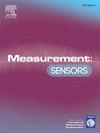Augmented and virtual reality based segmentation algorithm for human pose detection in wearable cameras
Q4 Engineering
引用次数: 0
Abstract
Pose graph optimization is a crucial method that helps reduce cumulative errors while estimating visual trajectories for wearable cameras. However, when the posture graph's size increases with each additional camera movement, the optimization's efficiency diminishes. In terms of ongoing sensitive applications, such as extended reality and computer-generated reality, direction assessment is a major test. This research proposes an incremental pose graph segmentation technique that accounts for camera orientation variations as a solution to this challenge. The computation only improves the cameras that have seen large direction changes by breaking the posture chart during these instances. As a result, pose graph optimization is essentially slowed down and optimized more quickly. For every camera that hasn't been optimized using a pose graph, the algorithm employs the wearable cameras at the start and end of each camera's trajectory segment. The final camera in attendance is then determined by weighted average the various postures evaluated with these wearable cameras; this eliminates the need for lengthy nonlinear enhancement computations, reduces disturbance, and achieves excellent accuracy. Experiments on the EuRoC, TUM, and KITTI datasets demonstrate that pose graph optimization scope is reduced while maintaining camera trajectories accuracy.
基于增强现实和虚拟现实的分割算法,用于可穿戴相机中的人体姿态检测
姿态图优化是一种重要的方法,有助于在估计可穿戴相机的视觉轨迹时减少累积误差。然而,当姿态图的大小随着摄像机的每次额外移动而增加时,优化的效率就会降低。在扩展现实和计算机生成现实等持续敏感的应用中,方向评估是一项重大考验。本研究提出了一种增量姿态图分割技术,该技术考虑了摄像机的方向变化,以此来解决这一难题。在计算过程中,只对方向变化较大的摄像机进行改进,在这些情况下打破姿势图。因此,姿势图优化的速度基本上会减慢,优化的速度会加快。对于每台尚未使用姿势图进行优化的摄像机,算法都会在每台摄像机轨迹段的起点和终点采用可穿戴式摄像机。然后,通过这些可穿戴式摄像头评估的各种姿态的加权平均值来确定最终到场的摄像头;这样就不需要进行冗长的非线性增强计算,减少了干扰,并实现了极高的精确度。在 EuRoC、TUM 和 KITTI 数据集上的实验表明,姿势图优化范围缩小了,同时保持了摄像头轨迹的准确性。
本文章由计算机程序翻译,如有差异,请以英文原文为准。
求助全文
约1分钟内获得全文
求助全文
来源期刊

Measurement Sensors
Engineering-Industrial and Manufacturing Engineering
CiteScore
3.10
自引率
0.00%
发文量
184
审稿时长
56 days
 求助内容:
求助内容: 应助结果提醒方式:
应助结果提醒方式:


